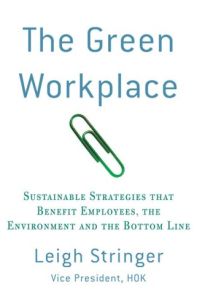Join getAbstract to access the summary!

Join getAbstract to access the summary!
Leigh Stringer
The Green Workplace
Sustainable Strategies That Benefit Employees, the Environment and the Bottom Line
Palgrave Macmillan, 2009
What's inside?
Today, Gordon Gecko would say, “Green is good.”
Recommendation
The business case for sustainability is now fairly well-established: Doing good is good business. Building sustainability into your firm requires change, which human nature resists. Leigh Stringer describes how companies can solve pressing environmental problems while increasing profits and providing a happier workplace. getAbstract recommends this book as a solid starting point from which to address sustainability changes. Stringer covers a full range of promising solutions and provides a “green” take on change management, but other books in the field may offer more depth on implementation. “Design thinking” is all about solving multiple problems at once, and Stringer persuasively argues that this approach can meet the demands of the emerging idea-driven marketplace.
Summary
About the Author
Leigh Stringer is a vice president at Hellmuth, Obata & Kassabaum, an architectural firm specializing in design solutions for sustainability. She edits TheGreenWorkplace.com.


















Comment on this summary